As kids who grew up in India, we were taught about the importance of Lucknow during the struggle for independence. It was during the revolt of 1857, India’s first big war of independence, that Lucknow won a prominent place in the history books. As one grew older, many perhaps forgot about this fact, who really remembers that much from history class anyway; but Lucknow featured in minds as a place to visit to eat the best biryani and kebabs in the country. Any half descent ‘listicle’ would feature Lucknow as one of India’s beat places for food. Obviously for those of us from the North, from UP or Delhi or thereabouts, the city was more in our general viewpoint, but not so much for the rest of the country. Lucknow was in big bad UP, and avoidable as a destination for holidays.
However, being the history enthusiast that we are, combined with our love for beautiful buildings and obviously food, Lucknow was prominent on our list of places to explore. We were not ready to leave anything out, not even big bad UP or Bihar (which we’ll tell you about next). And so after a colourful Holi weekend in Braj and two days exploring the Taj and other wonders of Agra, we landed up in Lucknow. As mentioned in an earlier post, the Nawabs, while immersed in their fabulous lavish lifestyle, were great patrons of the arts and culture, and left two wonderful lasting legacies – amazing food and beautiful buildings.
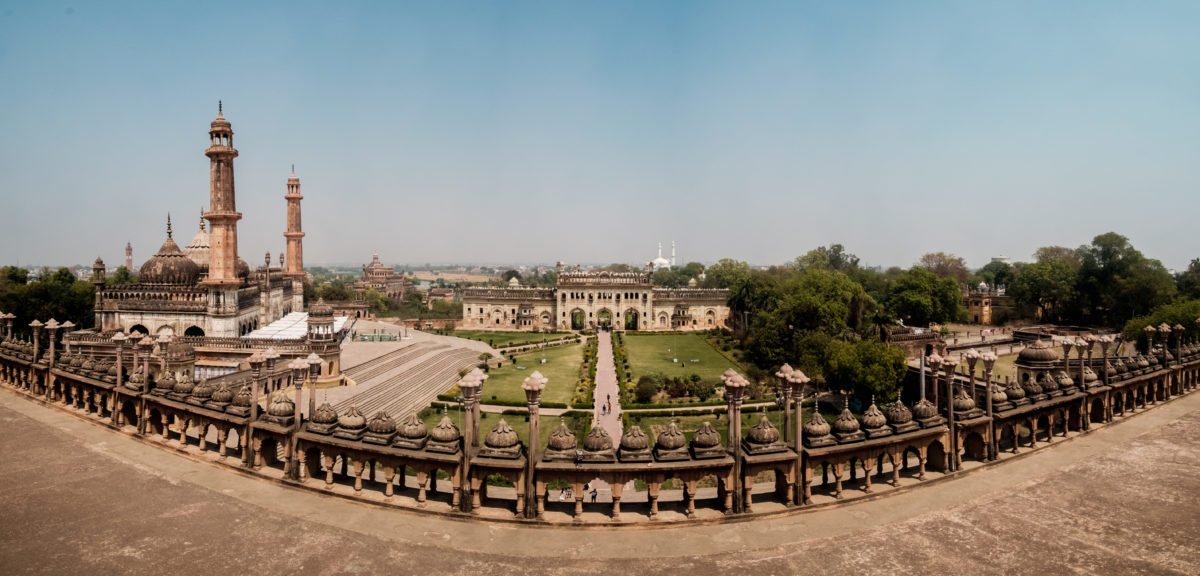
The view from the top of the Bada Immambara, with the Asifi Masjid to the left and the Shahi Bawli (step well) to the right.
Lucknow has everything the intrepid traveller is looking for, great food in tiny roadside stalls, crowded bazaars full of history and life, stunning monuments, and plenty of nooks and crannies full of stories. It is in the old city, once inhabited by the Nawabs, that Lucknow truly comes alive, with the towering Rumi Darwaza as a gateway into another world. It is here that we spent the most time, wandering inside the old Imambaras and discovering other tiny mosques and monuments that were equally stunning.
It is said that the Lucknowi School of architecture was the last bastion of a form of the Mughal style of architecture in India, and was the last of the purest Indo-Islamic style with no European influences. Most of the structures in Lucknow, with the two minaret mosques, green spaces, labyrinths, and wide pools, all tell of a Persian influence, brought to the city by the Nawabs. Hussainia, or Imambara as they are called in India, is a congregation hall for Shia commemoration ceremonies, especially those associated with the Remembrance of Muharram. They were mainly gathering halls to remember the martyrdom of Imam Husain, the third Imam of the Shia sect of Islam. There are many such gathering places in the world, in Bangladesh, Pakistan, Iran, and other parts of India, though the Bada Imambara, is one of the most famous.
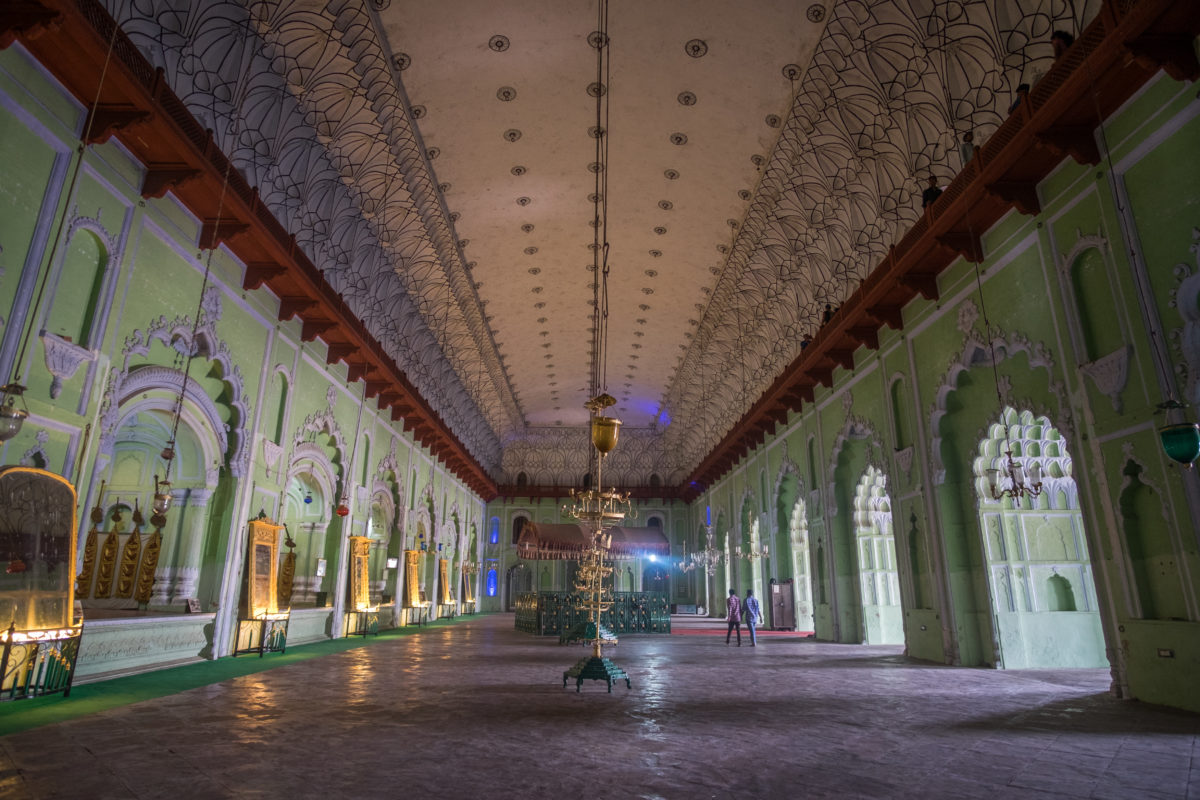
Built in 1785, the year of a devastating famine in the region, the Imambara complex was meant to provide relief and succour to families in the city. It not only provided employment for over a decade, it was also a space for people to seek shelter and food. The entire complex consists of two imposing gates that lead to a mosque, a step well, a labyrinth and the main hall. While many legends surround the complex, including the fact that there is a direct secret tunnel to Delhi and Allahabad, the most impressive feature of the main hall is its roof. It is one of the largest arched structures in the world, and the ceiling has been built with no supporting beams, an engineering marvel. Something you realize only when the guide points it out to you and you look up and marvel at the detailing and sheer size of it all. All around the ceiling and the roof are the narrow passageways and paths of the labyrinth, navigable only with a guide; it’s kind of fun because they tell you all the fun facts. The hall contains the tomb of Asaf-ud-Daulah, the Nawab who commissioned the complex, and next to him is the tomb of the man who won the competition to design the Imambara, an architect from Delhi.
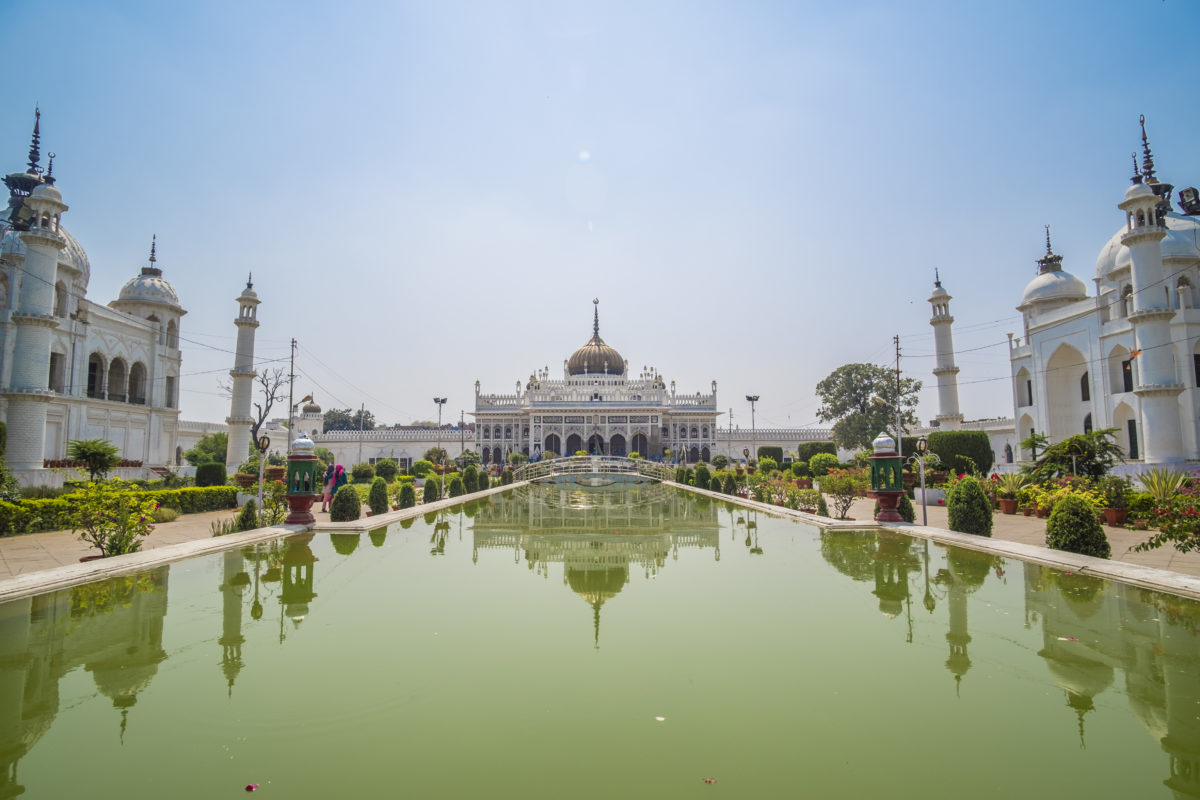
A short walk away is the Chota Imambara, built by the third Nawab, which houses his tomb along with his mothers’. Misleadingly this one is not actually a smaller version of the bigger complex, it is quite different, but the complex is smaller in scale and one supposes the name stuck over the years. The complex has a cool old Turkish bath, a water tower, a mosque with beautiful calligraphy on the walls with verses from the Koran, and a main hall full of chandeliers. The large number of chandeliers is a bit startling, but with gilded mirrors at each end, it provides a funky effect with the light. The Chota Imambara has a large pool in front of it, and a huge nursery at one end, providing a lot of greenery and a cool respite from the scorching heat. We sat by the steps of the bath, under some trees, and gazed at the five doorways, a typical feature in this style of Islamic design, trying to imagine a time when the Nawabs ruled and then lost the city to the British.
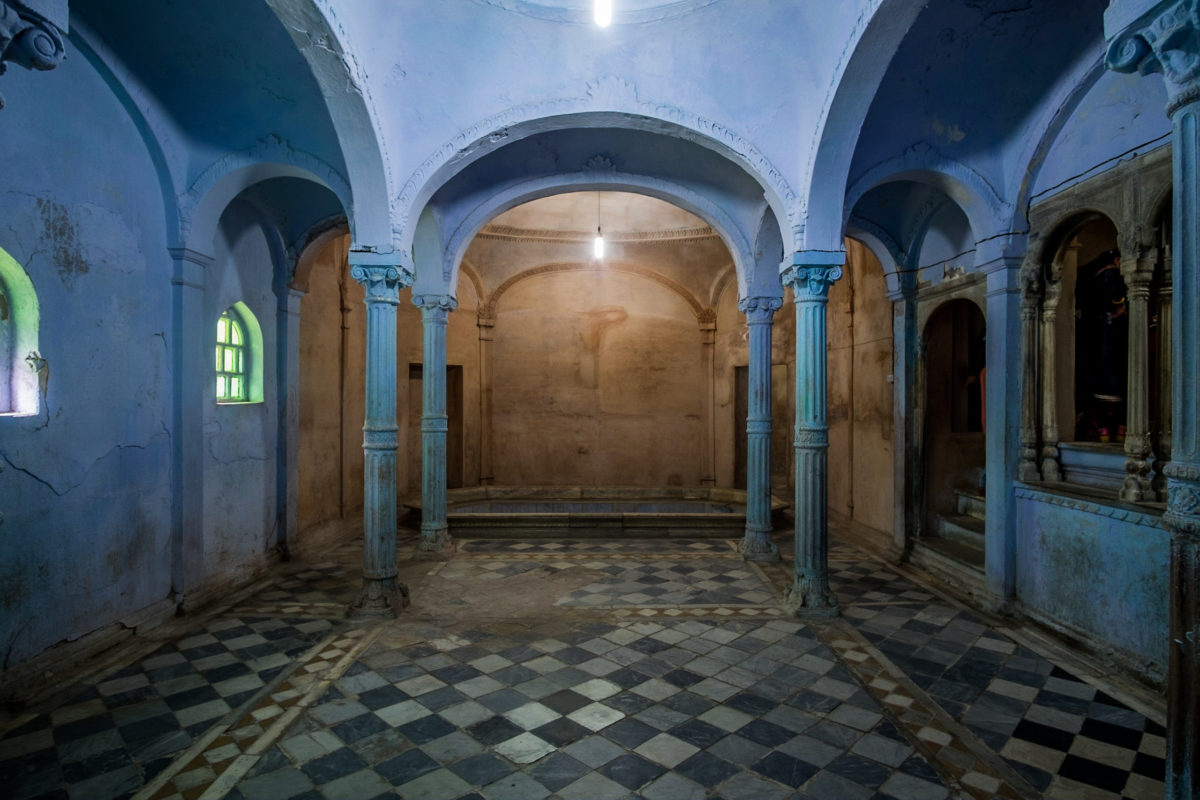
Far away from the old city, the mosques and palace complexes and the sixty foot high carved Rumi Darwaza, stand the ruins of the British Residency. Built during the late 1800s, during the reign of the fifth Nawab, it served as the home of the British Resident General, a representative in the court of the Nawabs. The building complex was also the site of the battle of 1857, and the ruins today still carry bullet and cannon holes from battle. While there are beautiful lawns and plenty of trees around, the scarred buildings and empty spaces give you a mixed feeling of sadness, pride and pity at the struggle and destruction that would have ensued.
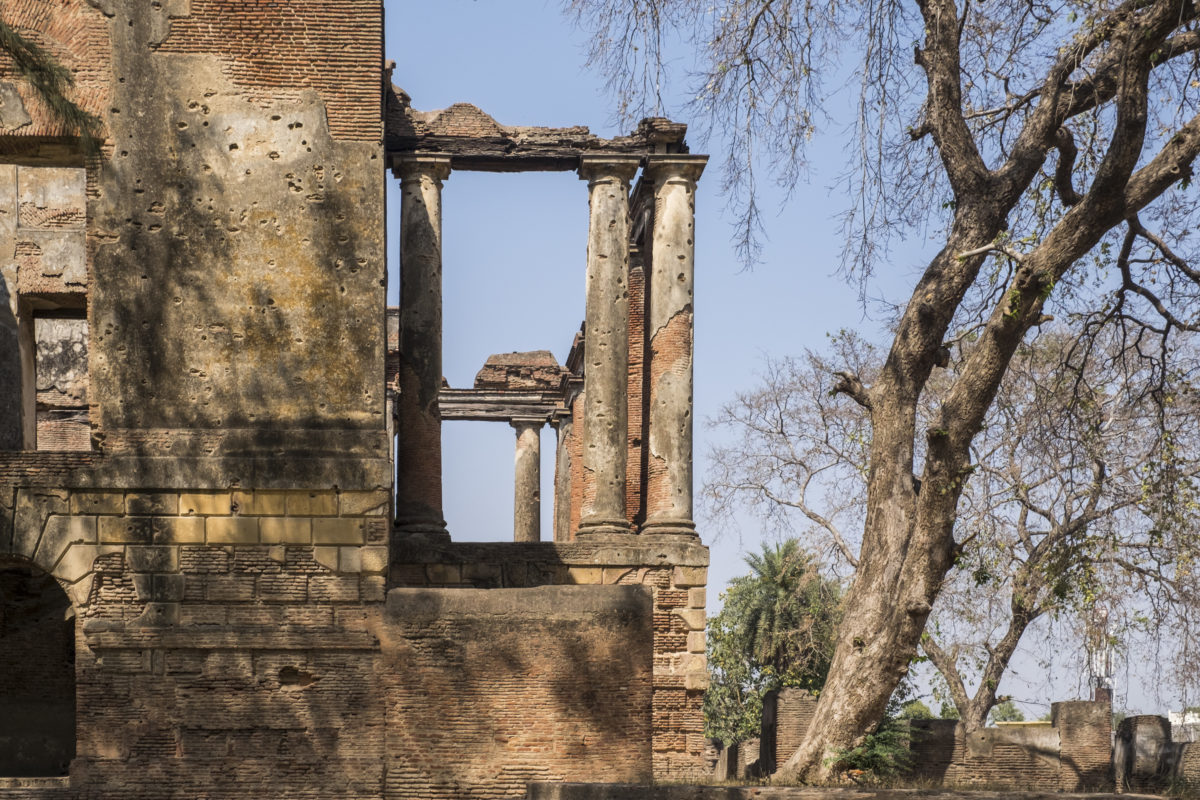
There are many other beautiful buildings in Lucknow and we recommend visiting as many as you can. The form and style is quite different from the Mughal style of architecture, and is more reminiscent of the older Islamic dynasties in the country. What is wonderful about Lucknow, is that there are tons of green spaces across the city, each monument no matter its size is surrounded by a garden and trees. Apart from the lovely monuments are also old mansions or kotis as they are called locally, of rich courtiers, many of them still inhabited. Any auto or rickshaw ride around the city will be incomplete without seeing a few of these mansions strewn about the place, so make sure to keep your eyes open. We heartily recommend a holiday in this wonderful city, to experience a different culture, one that was stately and artistic, to understand a few key facts of what contributed to the making of India, and obviously to eat a ton of yummy food.
Some Useful Information:
There are broadly two main tourist areas in Lucknow, Chowk and Quaiser Baug, and you should spend most of your time there. Both these areas should take a day each
In Chowk, besides the Immambaras and the Rumi Darwaza you can also check out the Jami Masjid (thought only from outside for non Muslims) the clock tower and the under visited picture gallery and the Tile Wali Masjid. You can pick up a pass at the Immarmbaraj that includes entry to most of these attractions on the same day. This way you save some money and also make sure you don’t miss any attraction!
The Qaiser Baug (Kaiserbaug) area is not as popular as the Old town around Chowk, but its beautiful nonetheless. It is a lovely area to wander, with broad streets, peaceful gardens and beautiful buildings liberally sprinkled around. The more well known amongst them are the tombs of Sadat Ali Khan (you can take the spiral staircase to the top here to get a nice view of Lucknow) and tomb of Begum Murshidjadi.
If you haven’t had your share of historical buildings as yet, you can visit the La Martinere Building, the Chattar Manzir and the Dilkhusha Kothi. You could also check out Shah Najaf Immambara and the Sibtainanbad Immambara around Hazratganj. Hazratganj itself is a lovely place to walk around, eat some Chaat and rummage through old bookstores.
By now you would most definitely have had your share of the Nawabi architecture and is time to indulge in the other thing the Nawabs were known for, their amazing food. To know more about Lucknow’s mouth watering Kebab options, check out our post on Lucknow’s best food.
All in all you can probably do Lucknow is two days, but if you want to really do justice to all there is to see (and eat!), we suggest you spend three.
I love learning the history of places I’ve never been. Thanks for this thorough post! The Chota Imambara does look impressive.